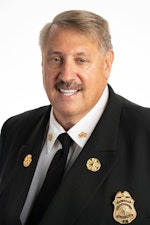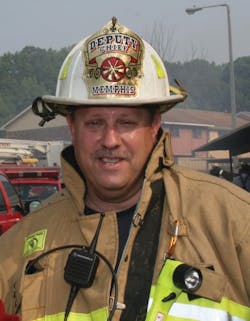A recent scan of the headlines says it all: “New York Struggles With Heroin Overdoses”; “New Report Shows Explosive Growth of Heroin in Kentucky”; “Ohio Struggles With Epidemic of Heroin Overdoses”; and “Massachusetts Governor Declares Emergency on Opiate Abuse.”
These are just some of the headlines. According to the ABC News website, “In and around Cleveland, heroin-related overdoses killed 195 people last year, shattering the previous record. Some Ohio police chiefs say heroin is easier for kids to get than beer. In Missouri, admissions to treatment programs for heroin addiction rose 700% in the past two decades. In Massachusetts, state police say at least 185 people have died from suspected heroin overdoses in the state since Nov. 1, and the governor has declared a public health emergency.”
In fact, almost every state is citing a sudden increase in heroin overdoses and deaths. Recently, U.S. Attorney General Eric Holder called the 45% increase in heroin overdose deaths between 2006 and 2010 an “urgent and growing public health crisis.”
Follow the money
Why the sudden surge in heroin use? It all comes down to money. Many people who abused pain killers such as Oxycontin and other pain pills started switching to heroin after there was a crackdown on prescription pills and they became harder and more costly to find. A gram of prescription pill opiates can easily go for $1,000 on the street, whereas the same gram of heroin will sell for around $100. It is essentially a matter of economics.
In 2007, there were an estimated 373,000 heroin users in the U.S. By 2012, the number had risen to 669,000, with the greatest increases among those 18 to 25 years old. First-time users nearly doubled in the six-year period ending in 2012, from 90,000 to 156,000. The recent death of actor Philip Seymour Hoffman also put a spotlight on heroin overdoses and deaths.
Heroin use is no longer limited to big cities. Escalation in heroin use, overdoses and deaths is now reported in many suburban and rural communities. I recently spoke to a nurse I’ve known for many years who now works in a small rural community hospital some 35 miles south of St. Louis. She tells me they have seen an explosion of heroin use coming into the emergency room.
For you street medics, heroin is commonly known by its street names of Big H, Blacktar, Brown Sugar, Dope, Horse, Junk, Muc, Skag and Smac. Heroin usually has a white to dark brown powder or tar-like substance look. Heroin can enter the body in different ways. Those who abuse it can inject it into a vein or a muscle, smoke it in a water pipe or standard pipe, mix it into a marijuana joint or cigarette, inhale it through a straw as smoke or snort it through the nose.
Heroin is highly addictive and is derived from morphine, so it is a central nervous system depressant that affects the pleasure centers in the brain and reduces one’s ability to feel pain. Because it is a central nervous system depressant, heroin’s effects on users is a mental diminishment that affects their ability to think and reason. They also show slowed slurred speech, a slow gait, constricted pupils and droopy eyelids. Right after putting heroin into the body, those who take it describe a rush of euphoria and warming flushing of the skin. The treatments for heroin overdoses include your usual life-support measures, including airway management, and the use of Narcan to counteract the effects of the drug.
But now there appears to be another attempt to combat heroin overdoses. Some communities are going to allow police officers to carry Narcan and administer it to patients they believe have overdosed on heroin, while in still other communities and states legislation is working its way through state houses to allow police officers to administer Narcan. Two such states are Missouri and New York.
In other communities in Illinois, Massachusetts, New Jersey and Pennsylvania, police officers are already carrying Narcan. In DuPage County, IL, members of 23 police departments have been trained to administer Narcan to suspected heroin overdose victims prior to EMS arrival. The program was set up by the DuPage County Health Department in order to oversee the training and distribution of Narcan to local law enforcement agencies.
Most police departments that are involved in administering Narcan are not having officers start IVs and draw up Narcan to be injected through the IV site; rather, they are using a nasal spray form of Narcan. In other states, like New Hampshire, an EMT and EMR (emergency medical responder) scope of practice has now been expanded to allow EMTs to administer Narcan. Most of these police programs are funded by drug seizure or asset forfeiture money. As part of this momentum, on April 3, 2014, the U.S. Food and Drug Administration (FDA) approved the use of Narcan auto injectors by family members and caregivers to someone they suspect has overdosed on Narcan.
This all adds up to a heightened awareness and efforts to combat the sudden rise in heroin use. Hopefully, it will all end one day.
For more news and training on EMS, visit http://EMSWorld.com/.
GARY LUDWIG, a Firehouse® contributing editor, has 35 years of fire, rescue and EMS experience. He currently serves as a deputy fire chief for the Memphis, TN, Fire Department. Ludwig is also chair of the EMS Section for the International Association of Fire Chiefs. He can be reached through his website at garyludwig.com.

Gary Ludwig
GARY LUDWIG has served in three fire departments over his career: St. Louis, Memphis, and Champaign, IL. His fire, EMS and rescue career spanned a total of 46 years, and he has been a paramedic for over 44 years. Ludwig served as president of the International Association of Fire Chiefs in 2019-20. He has a Master’s degree in Business and Management, has written over 500 articles for professional fire and EMS publications and is the author of seven books.
Connect with Gary
Email: [email protected]
Facebook: Gary Ludwig
Twitter: @ChiefGaryLudwig
Website: garyludwig.com






